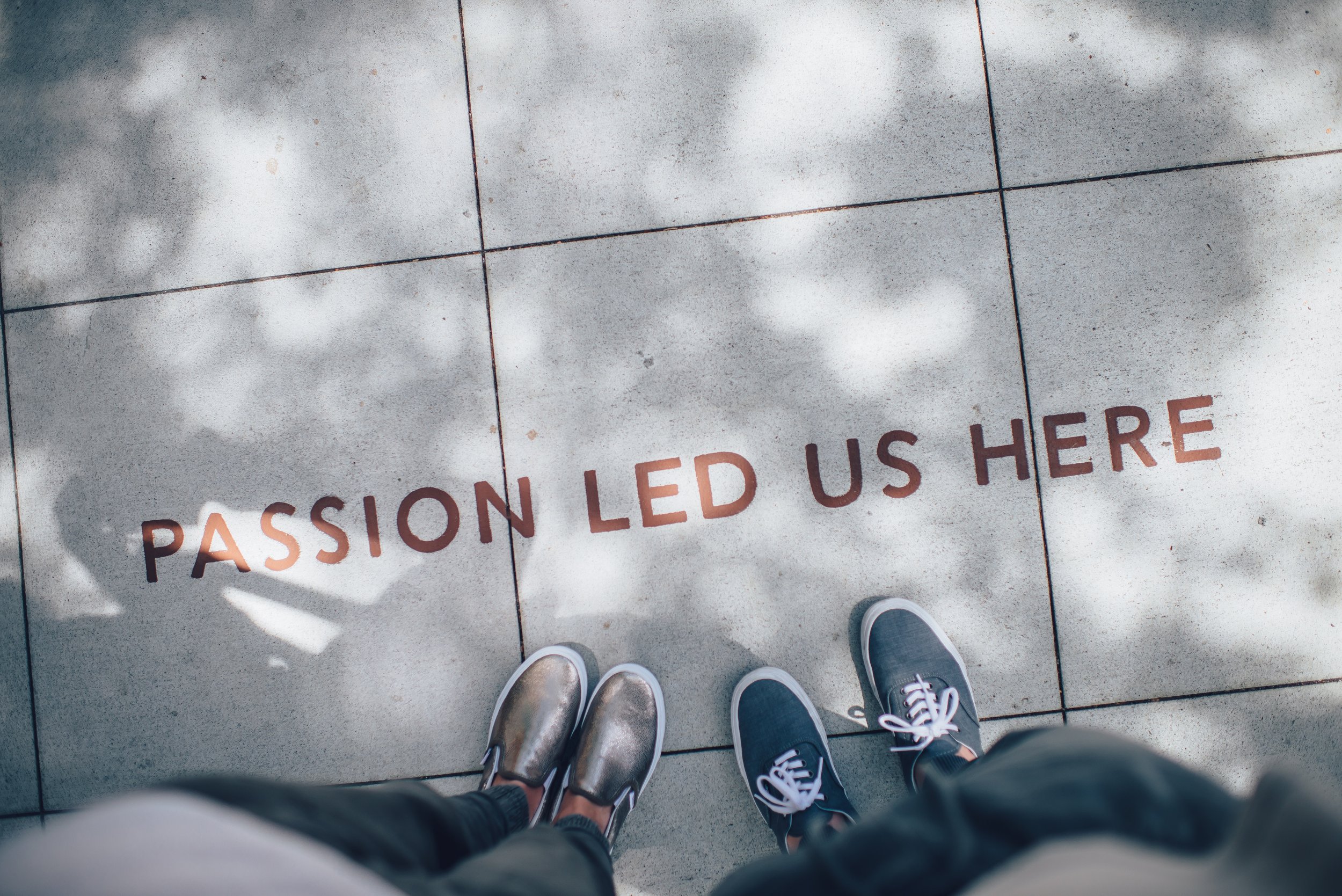From conflict to understanding, from getting stuck to moving forward
Anatomy of workplace Conflict Transformations: Tools, Tips, Thoughts
-
Workplace Conflict
-
Race & Gender
-
Conflict in Pop Culture
About the author - Dr. Sara Shamdani
“I don’t know what I think until I write about it”, wrote the brilliant Joan Didian. I am a socio-political scientist and a writer and I come to understand my experiences more fully through writing. And because I’m passionate about conflict transformation and work as a mediator to bridge people’s understanding of each other, I come to these pages to explore my experiences and understanding of conflict in our culture, particularly at work. Sometimes I draw on my personal stories and experiences and sometimes I purely cite the research I’ve read. I hope these stories and thoughts resonate with you and I hope you find something helpful in them.

Atomic Habits of Difficult Conversations
In his book, Atomic Habits, James Clear writes about importance of small, incremental changes yielding significant and long-lasting effects for the person. Make small changes everyday and you will get compelling changes over time.
Borrowing from Clear, in this post I want to highlight the incremental changes that you can make to your approach to difficult conversations about conflict so you can get better results with your co-worker, boss, spouse, or child.

De-escalation Tools (Part II): What to say and what not to say
In our last post, I wrote about the reasons why people escalate and the importance of concrete de-escalation techniques. In this post, I will expand on those techniques in more detail and will highlight the times that not following these steps will in fact heighten the conflict and further escalate the situation. So you have assessed that it is safe to intervene. What do you do and say?

Riding Out the Storm: De-escalation techniques in times of increased tensions
I have been reading about the increase in the level of violence on the TTC and have been aware of the increase in tension levels in everyday interactions. I was recently in a Tim Horton’s and was faced with a potentially escalating situation, which I will tell you more about. These situations are by nature unpredictable (and the ones on the TTC are outright dangerous, which I will also address) and yet using the following tools provide the best chance for a better outcome in such situations. In this post I will tell you about de-escalation methods and the do’s and the don’ts of such volatile situations.

How to encourage your teammates to work together on solving interpersonal disputes
These are constructive and collaborative problem solving tools that we use in our mediation work in order to help people in the workplace to see the problem together and work collaboratively to resolve their dispute.

The components of a sincere apology
After the Itaewon Halloween tragedy, where over 150 people died in a deadly crush, the Mayor of Seoul during a press conference offered a heartfelt apology as he paused several times to wipe tears from his eyes and collect himself: “I apologize for not apologizing sooner”.
Although the simple utterance of “I am sorry” is often a powerful path towards reparation and restoration, people crave a deeper understanding and articulation of the harm that has taken place. In this post read about the components of a sincere apology.

What is the biggest factor in enhancing workplace performance?
Harvard Business School Professor, Teresa Amabile and her team examined what affects workers' performances at their jobs. They found that workers’ intrinsic motivation is one of the most important factors driving creativity, enhancing performance, strengthening connection and productivity. But what affects this intrinsic motivation of workers?

Multitasking in Meetings: What to be aware of when running a hybrid or online meeting
From research and data from our own work, multitasking in team meetings often leads to tensions and conflict among individuals in the long term. In this blog post, we talk about how to have a productive meeting for your employees’ wellbeing since numbers of meetings has increased by 250%.

Challenges of the Hybrid Work Model: Meetings in the new era of work
The hybrid work model, although not flawless, allows possibilities that otherwise could not be even imagined. However, this brave new work model has its own struggles and those must be addressed as workplaces that employ these models evolve. Read more on how to deal with these struggles.

When art talks about work: Beyonce and the ‘Great Resignation’
Music is one of the most ephemeral forms of art as it moves the body through the rhythm, sensations, and vibrations it creates. It is incredible to see Beyoncé use her platform in a powerful house-inspired dance song, inviting the listener to dance, stomp, clap, and move their bodies to the rhythms of the song and release the pain, sadness and anger of the last few years through dance. And while doing that listen and sing the lyrics around philosophies of a healthy work-life balance.

Duchess of Sussex and accusations of bullying: a case of cultural clashes at work
In my last post, I wrote about the accusations of workplace bullying against Meghan Markle, Buckingham Palace’s investigation and what belies a fair and just investigation. In this post, I want to address how the lack of cultural competency and understanding of communication styles that change based on culture can lead to misunderstanding to such an extent that their impact can feel like ‘bullying’, ‘undermining’, and ‘disrespecting someone’s abilities’.

What is a workplace investigation? Buckingham Palace and the investigation of bullying against Meghan Markle
A year and half ago, right before Prince Harry and Meghan Markle’s interview with Oprah was to be aired, news emerged that an investigation was being undertaken to explore allegations of bullying by the duchess towards her staff. In this post, I will unpack the pillars on which every fair workplace investigation must be fixed upon. My purpose here is not to decipher the truth, rather to point out the pillars that must uphold any workplace investigation for it to be fair and just.

In Praise of Avoiding Conflict
Avoiding conflict is often the healthy first step to managing every conflict, because it’s free and it can work pretty well. The only way avoidance causes problems is when we don’t recognize and accept when it’s not working.

Workplace Violence on Live TV
There are many, many angles to explore Chris Rock being assaulted by Will Smith at the recent Oscars, an example of a complex situation where multiple things are true at the same time. Here I want to highlight this perspective: what we saw was an interaction between three people who were at work. This situation is analogous to a trade show attendee assaulting someone staffing a booth. Two of them likely felt verbally harassed, and the third was physically assaulted.

The Firm and the Disaster of Lack of Diversity
Sometimes I get a chance to combine my professional and personal passions, and this blog post is one of them! I’m a huge proponent of the business case for DE&I (Diversity, Equity, & Inclusion) policies, and in my spare time I love to dive into the royal family gossip. Right now the royal family has made front-page news with a cautionary tale about the massive business costs that result from underinvesting in DE&I training and policy implementation, as well as a lack of diverse voices in senior leadership.

How to Manage Up? Concrete Tools for Middle Management
I was at a talk recently where one of the participants presented a brief story of her workplace around her relationship with her supervisor. The middle-manager caught a significant process oversight and notified her supervisor. She was told to wait for the next steps, but…

Post-pandemic Workplace Challenges
Workplaces are starting to open up again and we will return to our offices and navigate the next phase of the pandemic between a hybrid workplace model and a full return. On our path to heal from the trauma of the pandemic, it is important to be prepared for conflict, tension, and the effects of the pandemic spilling over into the workplace. These issues can be around disagreements about COVID precautions, the organizational and job-role changes that have happened (including some workers being hybrid and some not), and the massive change in daily routines that many workers will experience.

Whoopi, race, colour and ‘passing’
“If the KKK was coming down the street and there was me and a Jewish friend....well... I would run....but the KKK will pass them but not me”, Whoopi Goldberg explained. This is an important sentence because it is a glimpse into understanding what Whoopi was talking about: ‘the fear of not being able to pass no matter how momentarily!’

Whoopi Goldberg, “Maus”, and the conversation of ‘what is racism?’
Recently there was a conversation on the talk show “The View” about some Tennessee schools banning Art Spiegelman’s brilliant book: “Maus”. They were talking about the significance of the book in showcasing the devastation of the Holocaust, and then the conversation took a turn by Whoopi Goldberg talking about how the Holocaust was not racially motivated since this was simply crimes of humanity against its own kind. She called it a “White on White crime.” Her colleagues mainly disagreed with her, but none were able to provide a substantial analysis or an argument of why Holocaust was about race. I have a lot of thoughts about this important topic.

A circle back to Science fiction
"My feelings are hurt", is such a wonderful sentence. My feelings. The focus, the subject of the sentence is the feelings, the feelings that belong to the person who is experiencing and narrating them. In this sentence, there's no "you", although the "you" can be implied, the focus is so strictly on the person who has been hurt. It's a simple utterance of truth about one self in its most indisputable way.

The role of the advisors
Advisors of our lives have an enormous influence on shaping and at times contributing to, or transforming the conflict. The third party can remind the two parties in conflict what is ultimately at stake in the situation, what really matters, and what do the parties ultimately want. When we are deep in any conflict, we begin to lose sight of what’s really important. The third party can see with a bit more clarity, with a more meta-view of the situation.

